“Rapid Injection Molding transforms ideas into reality at unparalleled speeds, making it essential for innovators looking to lead in highly competitive markets.”
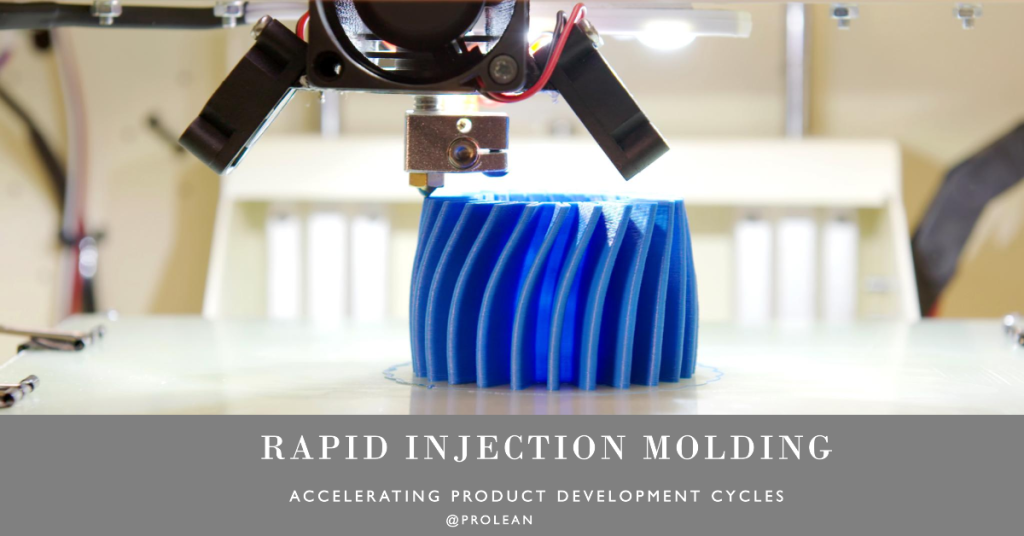
Rapid Injection Molding emerges as a crucial technology, bridging the gap between conceptual design and mass production with unprecedented speed. This innovative process leverages the principles of traditional injection molding. It significantly reduces the prototyping time and cost. Moreover, injection molding enables designers to quickly iterate and refine the designs.
This article will discuss rapid injection molding, its process, advantages, applications, tooling, and many more.
What is Rapid Injection Molding?
Let’s start with the definition. What is rapid injection molding? It is a speedy manufacturing process that transforms molten materials into precise, high-quality parts in a short timeframe. This method hinges on injecting the molten material into a pre-designed mold. Then, cooling it swiftly to form the desired shape. It’s a reliable choice for industries seeking to reduce the gap from conception to reality. The reason is that it allows for rapid prototyping and low-volume manufacturing with the finesse of traditional injection molding techniques.
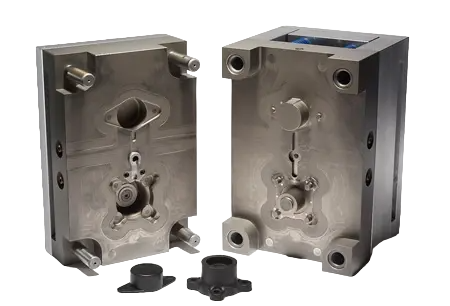
Rapid Injection molding
The essence of Rapid Injection Molding lies in its ability to streamline the product development cycle. Employing aluminum or other easily machinable materials for molds drastically reduces the time and costs associated with mold production.
Consequently, products can move from the drawing to the market at minimal time. It is a competitive edge in today’s fast-paced industry landscape. Moreover, Rapid Injection Molding offers unparalleled flexibility in material selection, encompassing a vast array of plastics and metals. This versatility ensures that prototypes and end-use parts meet exact specifications for functionality, durability, and appearance.
Related: What is Injection Molding? – CNC Machining Service, Rapid prototyping
Try Prolean Now!
The Process of Rapid Injection Molding
It is a process of converting a concept into a tangible product. Rapid Injection Molding simplifies this path. Subsequently, it offers a streamlined, efficient route. Let’s break down this process into its core stages, exploring each step’s nuances.
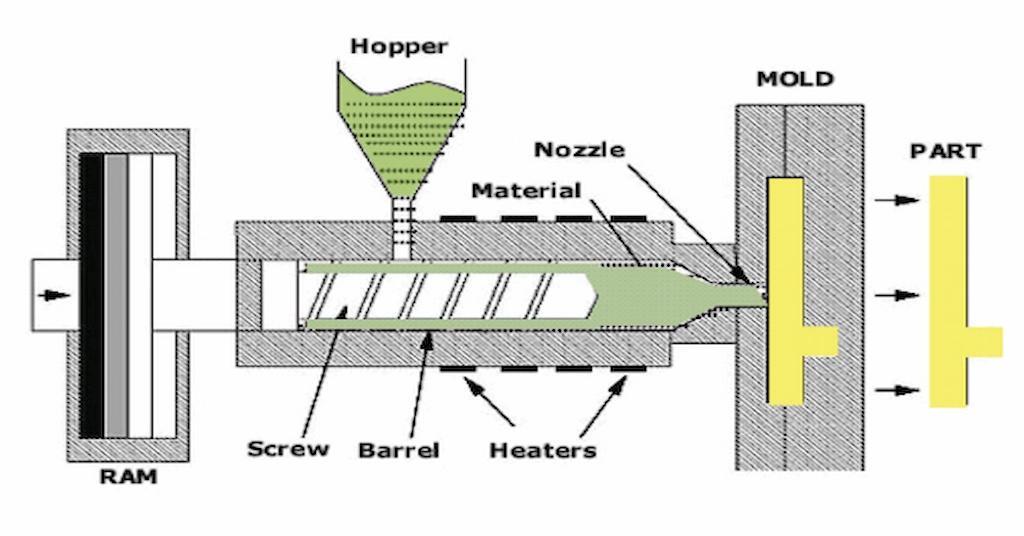 Rapid injection molding process
Rapid injection molding process
1. Part Design
The design phase is the foundation of the Rapid Injection Molding process. It begins with an idea. This idea transforms into a detailed 3D model. Designers must consider various factors. These include the
- Part’s function, aesthetics, and manufacturability.
- Every curve, angle, and dimension.
- Optimization for molding
Designers must ensure adequate draft angles and uniform wall thickness. This foresight prevents issues like warping or sink marks in the final product.
2. Mold Creation
Traditionally, mold-making was a bottleneck. It was time-consuming and costly. Rapid Injection Molding changes the narrative. It uses materials like aluminum for molds. Aluminum injection molds are preferable for prototyping.
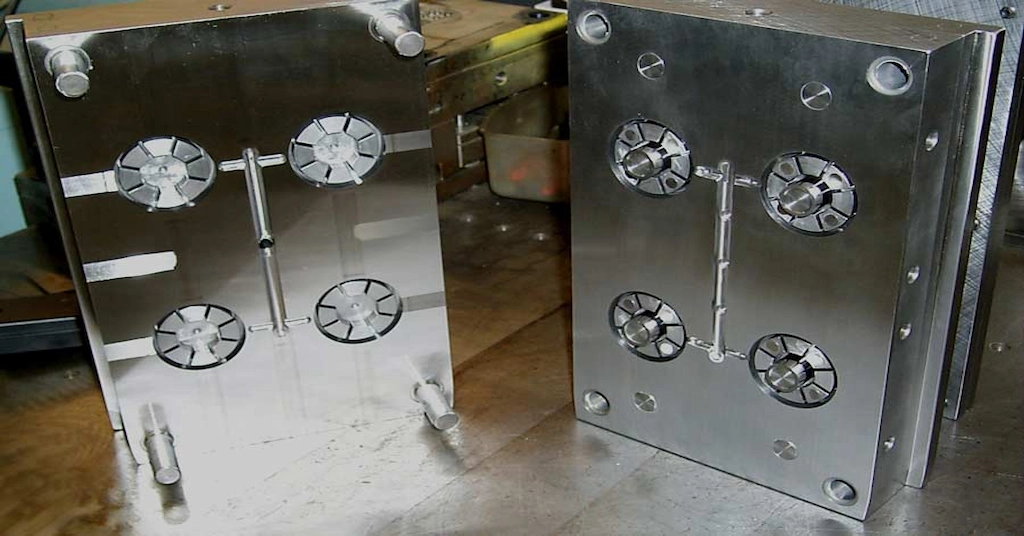
Rapid tooling for injection molding
Moreover, the design of the mold is critical. It must account for the part’s geometry, the material’s flow, and cooling channels. These factors ensure uniform cooling and reduce cycle times.
.3. Material Selection
This step involves weighing the part’s requirements against the material’s properties. The choice of material affects the part’s strength, flexibility, and appearance. It also impacts the molding process itself.
The injection molding is compatible with diverse materials, from durable thermoplastics to flexible elastomers. Each material has its own set of characteristics. These include melting temperature, flow rate, and cooling time. Meanwhile, the part meets its functional and aesthetic requirements.
4. Injection and Cooling
Next, the molten material is injected into the mold under high pressure. This stage requires precision control of injection parameters. These include injection speed, pressure, and temperature. After all, the goal is to ensure the material fills the mold completely and uniformly. After injection, the part must cool and solidify evenly.
5. Part Ejection and Finishing
Part ejection and finishing mark the culmination of the Rapid Injection Molding process. The cooled part is ejected from the mold. This step seems simple, yet it requires careful handling to avoid damage. After injection, the part may undergo various finishing processes. These can include trimming, polishing, or painting.
What are the Advantages of Rapid Injection Molding?
It embodies efficiency, propelling products from conception to reality at unprecedented speeds. This method streamlines the production process and opens new avenues for creativity and design flexibility.
- Speed to Market: Dramatically reduces development cycles, enabling faster product launches.
- Cost Efficiency: Lowers overall production costs by reducing mold-making and processing time.
- Material Versatility: Accommodates a wide range of materials, allowing for extensive product customization.
- Design Flexibility: Rapid molding facilitates easy modifications to designs, supporting iterative development and innovation.
- High-Quality Parts: Ensures parts are produced with consistent quality and durability, comparable to traditional injection molding.
- Reduced Risk: It allows for testing and design validation before mass production, minimizing the risk of costly errors.
- Sustainability: Potentially reduces waste with precise manufacturing and the possibility to use recyclable materials.
Applications of Rapid Injection Molding
This molding approach is known for its speed and efficiency and has found applications across a broad spectrum of sectors. Its versatility spans from automotive to medical injection molding, consumer goods to electronics, etc.
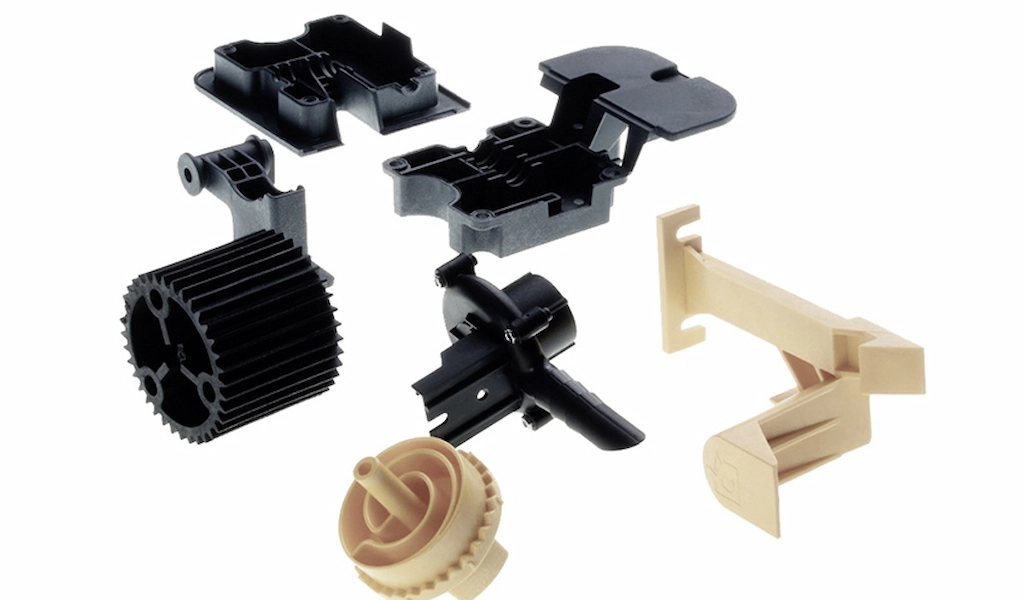
Rapid injection molded parts
This molding approach allows companies to test, iterate, and refine products like never before. This agility is crucial in today’s fast-paced market, where the ability to adapt and respond to consumer needs can set a company apart from its competitors.
The following are the Rapid Injection Molding Applications;
- Automotive components: door handles, dashboards, bumpers
- Automotive interiors: air vents, control knobs
- Medical devices: surgical tools, implants, diagnostic equipment
- Consumer electronics: phone cases, headphones, chargers
- Packaging: bottle caps, containers, cosmetic packaging
- Toys: action figures, puzzles, board game parts
- Sporting goods: helmet parts, bicycle components, fitness equipment
- Aerospace parts: interior cabin components, air ducts, clips
- Agricultural equipment: irrigation system components, tool handles
- Construction materials: fasteners, connectors, valve parts
- Footwear: soles, insoles, buckles
- Furniture fittings: knobs, brackets, hinges
- Lighting fixtures: lamp bases, diffusers, light covers
- Marine equipment: dock fenders, buoys, deck fittings
- Robotics: gears, casings, robotic arm components
- Tools and hardware: handles, cases, tool components
- Valve and pump parts: housings, impellers, seals
- Wearable technology: smartwatch cases, fitness tracker bands
- Electrical switches and sockets: housing, switch gears
- Musical instruments: guitar picks, drumstick ends, keyboard keys
- Food industry equipment: conveyor parts, molds for food production
Try Prolean Now!
The Mold Design in Rapid Injection Molding
The mold design in Rapid Molding directly impacts the quality, efficiency, and overall project success. This stage requires precision and foresight, as the mold dictates the part’s shape, surface finish, and structural integrity.
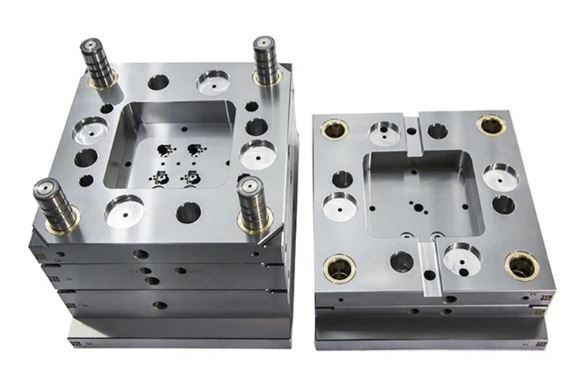
Aluminum njection mold
An effectively designed mold ensures the flawless reproduction of the part’s specifications and facilitates smooth manufacturing cycles. It optimizes material use, reduces waste, and can significantly lower production costs. Hence, investing time and expertise in mold design is essential for achieving high-quality outcomes and operational efficiency.
The following tips highlight the importance of thoughtful mold design in Injection Molding. They help to ensure that your project moves smoothly from concept to final product with optimal efficiency and quality.
- Ensure Proper Draft Angles: Facilitates easy part ejection, reducing the risk of damage.
- Maintain Uniform Wall Thickness: Prevents warping and sink marks, enhancing part strength.
- Incorporate Adequate Venting: Allows gases to escape, preventing defects in the final part.
- Optimize Injection Molding Gate Location: Ensures even material flow and to improve the part’s aesthetic and structural quality.
- Use Robust Ejection Systems: Promotes consistent part removal, increasing mold longevity.
- Design for Material Shrinkage: Accounts for material properties, ensuring dimensional accuracy.
- Consider Cooling System Layout: Achieves uniform cooling, reducing cycle times.
- Integrate Runner Systems Efficiently: Minimizes material usage and speeds up cycles.
- Apply Surface Finish Appropriately: Enhances part appearance and functionality as needed.
- Leverage Modular Mold Designs: Allows for flexibility and easy changes to the mold design.
Related: Tariffs on Injection Molds from China – CNC Machining Service, Rapid Prototyping
Rapid Prototyping Injection Molding Example
Rapid prototyping injection molding is popular in product development, particularly in the highly competitive consumer electronics industry. In this sector, the ability to quickly iterate designs and test functionality is not just advantageous; it’s essential for survival and success.
This method allows companies to transcend traditional barriers, accelerating the process from concept to market-ready product.
Rapid Injection Mold Tooling
Central to the process is the rapid injection mold tooling technique. Traditionally, mold-making was a time-consuming step in the prototyping phase, often taking weeks or months to complete. However, the advent of rapid injection mold tooling uses aluminum and other cost-effective materials. As a result, it facilitates the faster production of molds than their steel counterparts.
However, this rapid tooling and molding efficiency does not come at the expense of quality. Aluminum injection molds can produce highly detailed parts that meet the stringent requirements of consumer electronics, including complex geometries and precise tolerances. The reduced cost and time of mold production mean you can quickly change the for multiple iterations in the time it previously took to produce a single prototype.
High-Fidelity Prototypes for Consumer Electronics
In consumer electronics, the details make the difference. Here, rapid prototyping injection molding facilitates the creation of high-fidelity prototypes that are virtually indistinguishable from the final product.
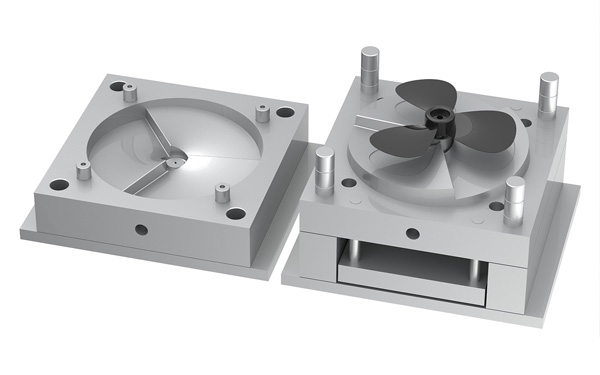
Electronic prototyping with rapid injection molding
These prototypes serve a critical role in user acceptance testing, where the device’s fit, feel, and function are essential. For instance, the prototype must match the device perfectly and meet the aesthetic and tactile expectations of the target market when developing a new smartphone cast.
Therefore, through rapid injection molding, companies can produce these prototypes with the exact materials, textures, and colors of the intended final product, ensuring that each iteration is as close to the consumer’s hands as possible.
Selecting the Right Injection Molding Material for Your Project
Finding the best material for injection molding is a crucial decision that influences the functionality, and aesthetics of your final product, its cost-effectiveness, and production feasibility. Each material offers unique properties. The properties are strength, flexibility, heat resistance, and aesthetic finish. Meanwhile, these properties must align with the product’s intended use and environmental conditions.
Moreover, the material’s compatibility with the rapid injection molding process affects the efficiency of production cycles and the detail achievable in the final product. Thus, a careful evaluation of the material properties of the project’s requirements is essential.
The following table summarizes the steps of rapid injection molding material selection.
Table: Injection Molding Material Selection Steps
|
Step No |
Action |
Description |
|
1 |
Define Product Requirements |
Identify the key characteristics needed in the final product, such as mechanical strength, temperature resistance, and visual appearance. |
|
2 |
Consider Environmental Conditions |
Assess the conditions under which the product will be used, including exposure to chemicals, temperatures, and physical stress. |
|
3 |
Evaluate Material Properties |
Match the product and environmental requirements with material properties like tensile strength, elongation, and heat deflection temperature. |
|
4 |
Assess Cost-Effectiveness |
How much does injection molding cost? It depends on considering the cost of materials and the impact on the overall project budget, balancing quality with affordability. |
|
5 |
Test and Validate |
Conduct tests with prototypes to ensure the selected material meets all requirements and performs as expected under real-world conditions. |
Read more:
Try Prolean Now!
Summing Up
This rapid production approach represents a paradigm shift in how products are designed, prototyped, and brought to market. It enables companies to iterate faster, respond to market changes more fluidly, and reduce the time from concept to commercialization. The reason is that Rapid Injection Molding significantly reduces the development times and costs.
As technology continues to evolve, its role in product development is set to become even more critical, making it an indispensable tool for innovators and manufacturers alike.
Furthermore, Prolean’s cutting-edge injection molding services can accelerate your product development process. With a focus on speed, quality, and efficiency, Prolean is your partner in turning innovative concepts into tangible products quickly.
FAQs
What distinguishes Rapid Injection Molding from traditional injection molding?
Rapid Injection Molding is distinguished by its speed and cost-effectiveness, primarily due to the use of less expensive mold materials and streamlined processes.
Can Rapid Injection Molding be used for large-scale production?
While ideal for prototypes and small to medium production runs, it may not be the most cost-effective solution for large volumes due to the initial mold cost.
What materials can be used in Rapid Injection Molding?
A wide range of plastics and metals can be used, including ABS Injection molding, polycarbonate, polyethylene, and more, depending on the project requirements.
How does Prolean ensure quality in its Rapid Injection Molding services?
Prolean employs advanced technologies, rigorous quality control measures, and expert engineering support to ensure high-quality outcomes for every project.
Is Rapid Injection Molding environmentally friendly?
Yes, it can be, especially when using recyclable materials and efficient production processes that reduce waste.
How do I know if Rapid Injection Molding is right for my project?
Consider factors such as the complexity of your design, material requirements, production volume, and timeline. Consulting with Prolean’s experts can also provide clarity and direction.
Resources
- Singh, G., & Verma, A. (2017). A Brief Review on Injection Moulding Manufacturing Process. Materials Today: Proceedings. https://doi.org/10.1016/j.matpr.2017.01.164
- Fischer, J. M. (2013). Handbook of Molded Part Shrinkage and Warpage. William AndrewPublishing. https://www.sciencedirect.com/book/9781455725977/handbook-of-molded-part-shrinkage-and-warpage

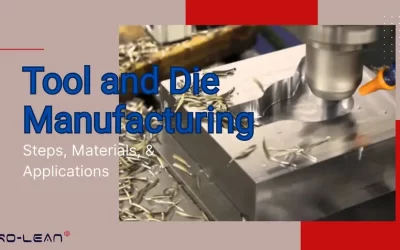
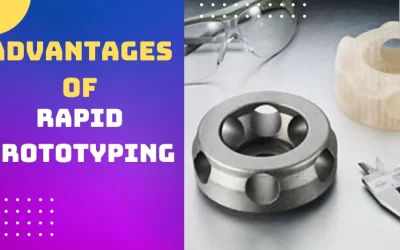
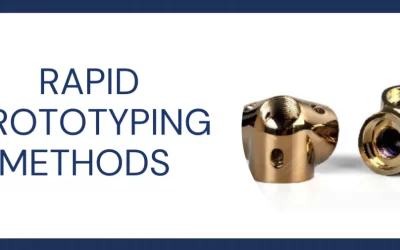
hello!,I like your writing so much! can you post prototyping designs for molds in future? I require an expert guide on this area to solve my problem. Maybe that’s you! Looking forward to see you.
Sure tloverto, we will publish mold design related blog is futute, here is an already publish blog related to mold gate design: https://proleantech.com/injection-molding-gate/